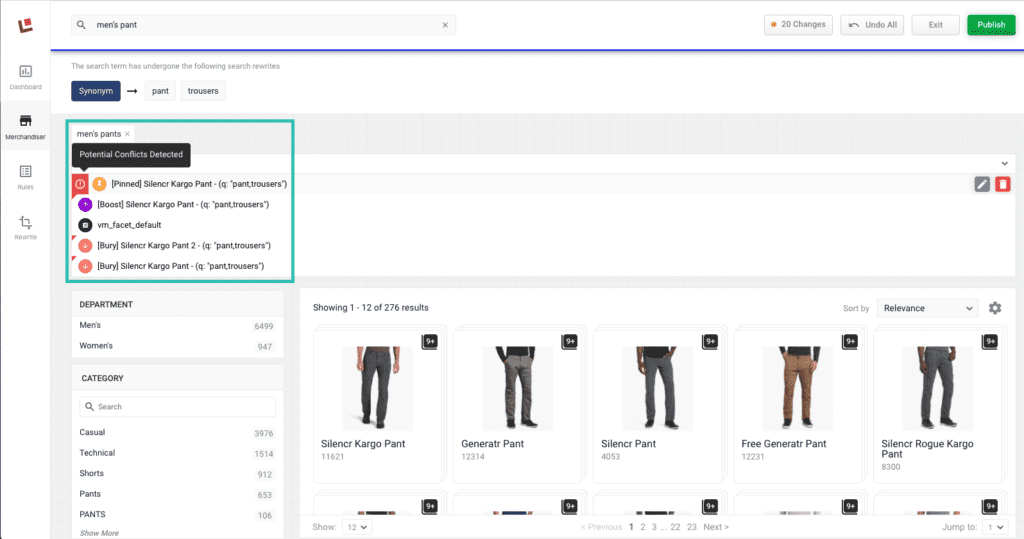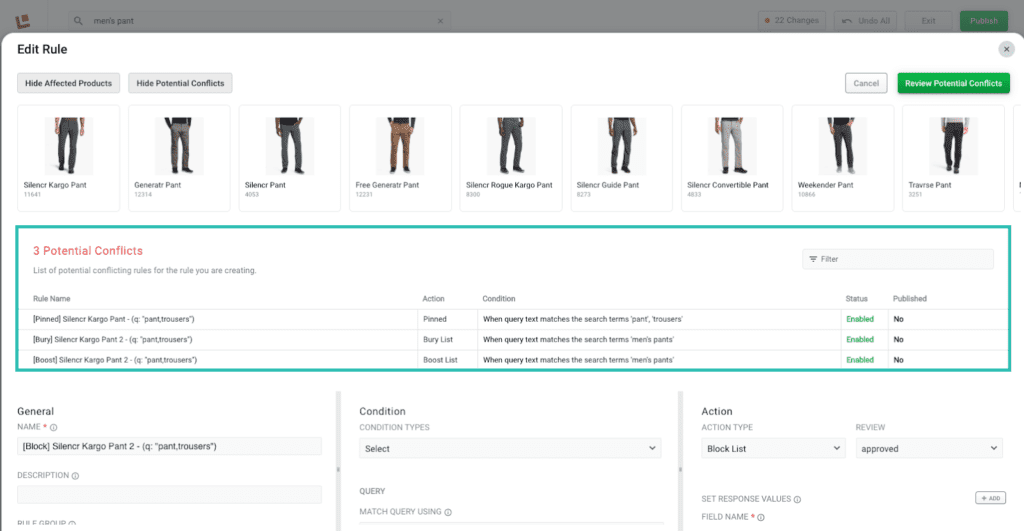Rule Conflict Detection Streamlines Merchandising Process
Rule Conflict Detection is a new feature in Predictive Merchandiser on Lucidworks Fusion that intuitively informs merchandisers of possible rule conflicts for specific products, leading to fewer instances of mistakenly boosted products.

This article was co-written by Liz O’Neill.
As a digital product merchandiser, there’s nothing worse than not having a platform tell you when there are conflicts to the rules you’ve created. The only way you’d know is if you catch it in staging, or even worse, in production.
Take this common scenario: Merchandiser Burton Booster creates a rule to boost a specific product for a search term. For example, when someone searches for “soap”, you may want to boost sanitizer to appear within those results knowing that many people are searching for travel-sized hand sanitizer. Later that day, Merchandiser Brooke Berries notices the sanitizer is running low in stock and creates an opposite rule to bury the sanitizer. Both rules get published to production, and either Burton Booster is confused as to why sanitizer is no longer boosted when someone searches soap, or Brooke Berries cannot figure out why the sanitizer is popping up on the first page of “soap” results when they tried to bury it.
Predictive Merchandiser on Lucidworks Fusion helps merchandisers manage rules through a visual interface. The platform will proactively alert you when you’ve created rules that have potential conflicts, especially if there are multiple merchandisers creating multiple rules for products. Predictive Merchandiser, like other merchandising systems allows for assigning priorities to rules, but also actively looks for conflicts.
Rule Conflict Detection isolates particular products to assess whether they are referenced by multiple rules to avoid conflicting actions. This can all be done before rules are published, ensuring all merchandisers are on the same page as changes are applied to the production website.
Below is an example of a merchandiser pinning a product and then applying a negating rule to bury that same product. Fusion’s Predictive Merchandiser intuitively informs their merchandiser that there are possible rule conflicts related to that particular product. Merchandisers will see a visual indicator if there is a conflict found in the fired rules list in the Merchandiser and Rules views. They will be able to click into the conflicting rule to see potential conflicts to diagnose or dismiss.



Rule conflicts are inevitable, especially when you have multiple merchandisers creating hundreds or thousands of rules in different systems. Rule Conflict Detection is an effective safeguard to ensure conflicts are detected and resolved before publishing to production. Being able to detect rule conflicts and resolve them before they adversely impact a production environment can save valuable time for merchandising teams and help protect brands from undesirable online search and browse experiences including unintended boosts and buries.
Learn more about improving your customer experience with Predictive Merchandiser on Lucidworks Fusion, or contact us today to try it out.
LEARN MORE
Contact us today to learn how Lucidworks can help your team create powerful search and discovery applications for your customers and employees.